Inseparable. ANGEL was our first venture into the world of intelligent textile systems. With the PATCH project we are going one step further and are researching how to manufacture sensors, actuators, conductors, and other components on an industrial scale. Washability, durability, and functionality paired with affordable production costs are the challenges we have accepted. We also develop suitable contact methods for interconnecting the various components of an intelligent textile system in a robust and reliable manner.
We are networked. Over the years we have acquired knowledge about intelligent textiles. This was mainly possible due to working on solutions ourselves in cooperation with our many project partners. We now want to share this empirical data with others, because we firmly believe that intelligent textiles can have a positive influence on all our lives in the future. As a result, we encourage dialog with suppliers, manufacturers, and customers in order to push forward further developments.
Contact us for a personal meeting!
- Connectionplate: “Docking station“ for electronical data processing unit
Our so-called connection plate can serve as a connection point for an electronic data processing unit in smart textile systems. It consists of a robust fabric with a waterproof membrane on the back. It can easily be patched or sewn onto other fabrics. Our barbed rivets made of magnetic stainless steel are attached to the connection plate. This way, a data processing unit can be put on magnets and, for example, taken off again before washing.
- Cradle: Extra grip in addition to the magnets
Thanks to a flexible plastic frame, the data processing unit remains securely in place even when subjected to lateral forces. The cradle is attached to the connection plate thanks to a Velcro fastener and can also be easily removed before washing.
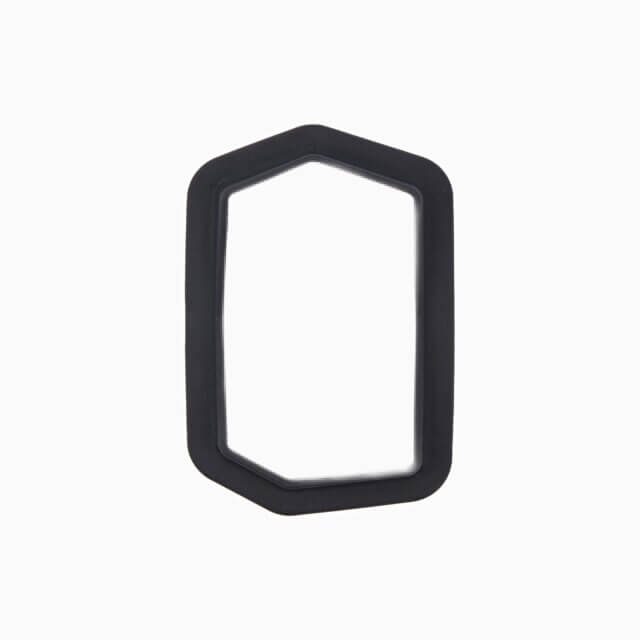
- Barbed rivets: the further development of the snap fastener
Thanks to our barbed rivets made of magnetic stainless steel, a data processing unit can be magnetically – and thus electrically – connected to a smart textile system with a “click”.
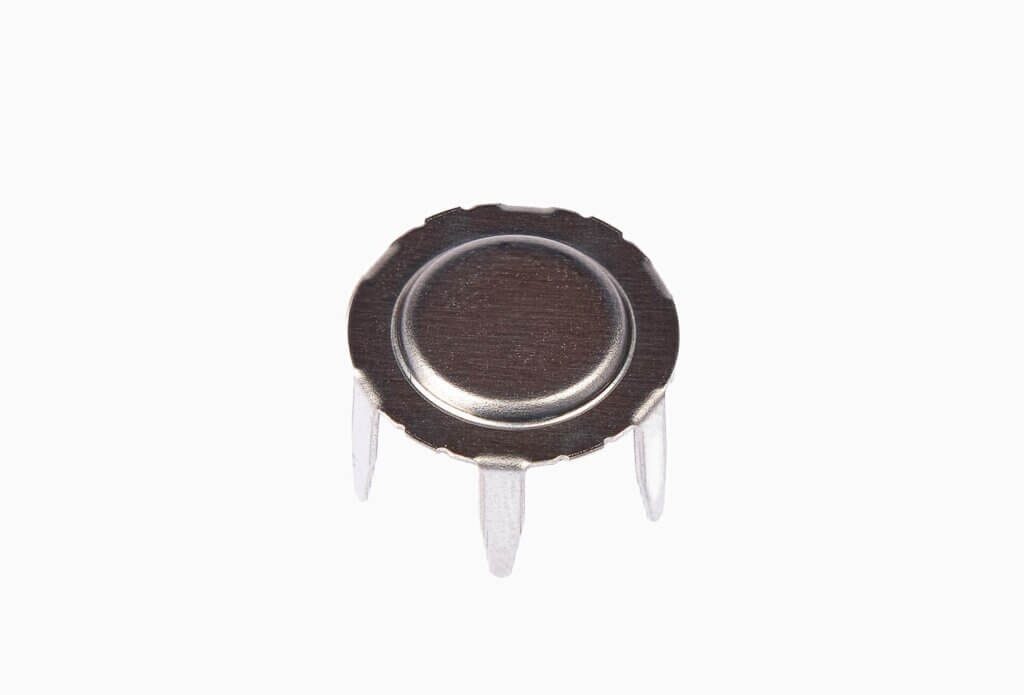
- The washer: The counterpart of the spiked rivet
As the counterpart to the barbed rivet, the washer is attached to the back of the connection plate and surrounded by the six barbes of the rivet. A crimping tool specially developed by us bends the spikes around the washer and creates a crimp contact on the back of the connection plate.
The washer comes in two varieties – stainless steel and copper alloy.
This makes it possible to establish contact with other components using silver-containing surfaces or stainless-steel embroidery with the help of NCA bonding and soldered connections.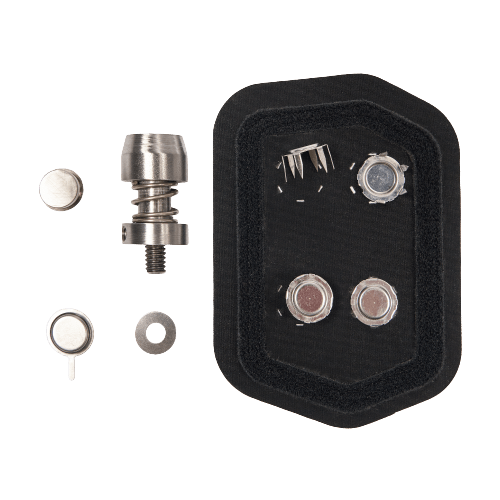
- Silver mesh: data flow guarantee
On the back of the connection plate, a silver-coated polyamide knit creates the connection between the spiked rivets and the conductor. Power and data can flow unhindered. The silver mesh has a pressure-sensitive thermal adhesive film on one side, which makes it easy to attach to the connection plate.
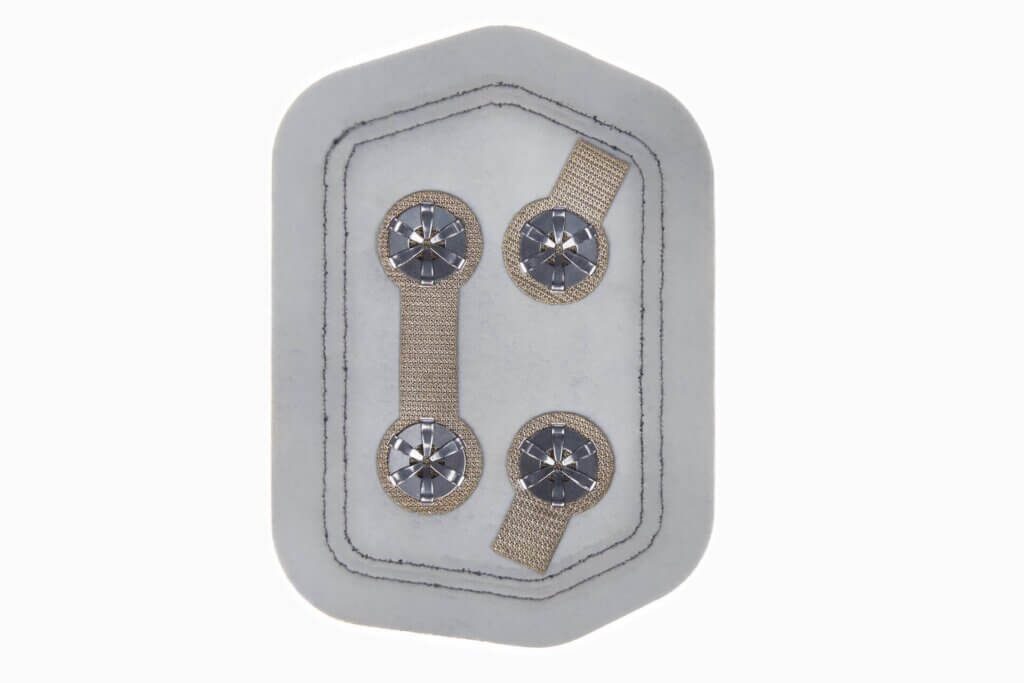
- NCA-Bonding: Our contacting method for smart textile components
A stable contact between the different components in the smart textile system is essential for its functionality. We have developed various processes for our systems that can be used to create contact points using NCA bonding (= Non-Conductive Adhesive Bonding). Here, hot-melt adhesive foils, which are used to insulate smart components, are melted on at certain points, and the components are thus connected to one another. This can be done thermally (with our specially developed stamp press) or by ultrasonic welding. Since thermal presses are also used in the mass production of clothing to apply logos or patch components, this process is not unknown in the textile industry and can be integrated into a production line effortlessly.
- Taping: integration of electrical conductors using continuous hot air processes
Electronic conductors are required to connect sensors or actuators to a data processing unit in the smart textile system. For this, we use a conductor that is integrated into a tape. This way, the conductor can be individually applied to a pre-assembled part using a continuous hot-air machine. This process is also known in the mass production of clothing, e.g., for sealing seams, and can be easily integrated into a production line.
- Shirt Tester: Automated function check in the production facility
To automatically and reproducible check the functionality of smart textile systems in the production facility, we have developed a t-shirt tester for our ANGEL system. This checks whether the electrical conductivity between the contact points is present – our ANGEL system can only function properly if this is the case. The t-shirt tester is easy to use and offers an ingenious opportunity to rework or sort faulty goods directly on site. All measured data can be saved and assigned to each shirt using unique serial numbers.
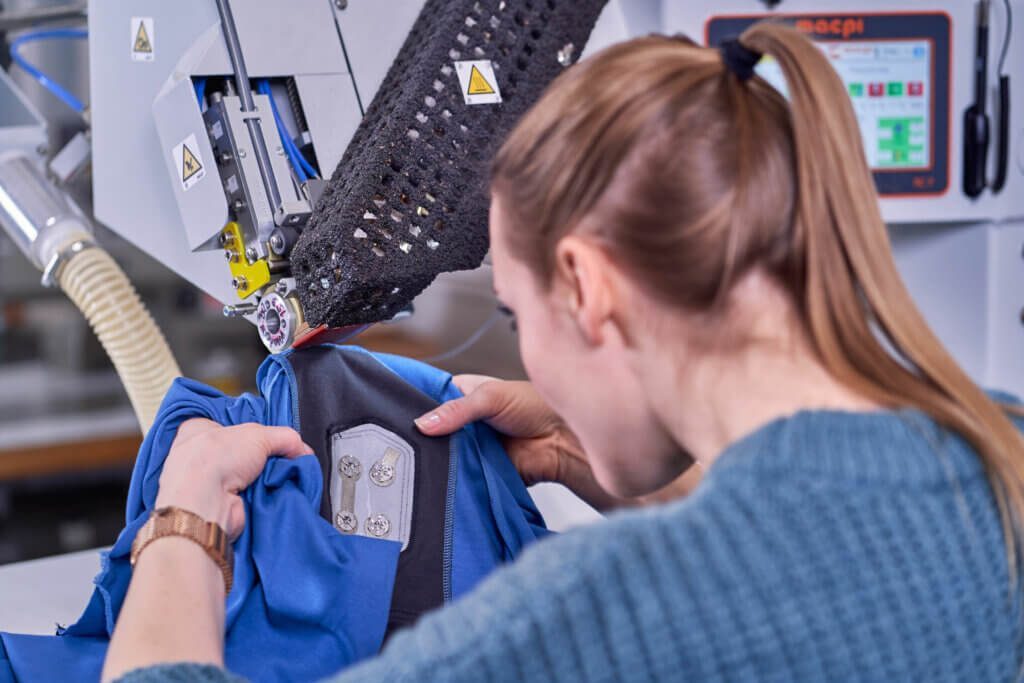
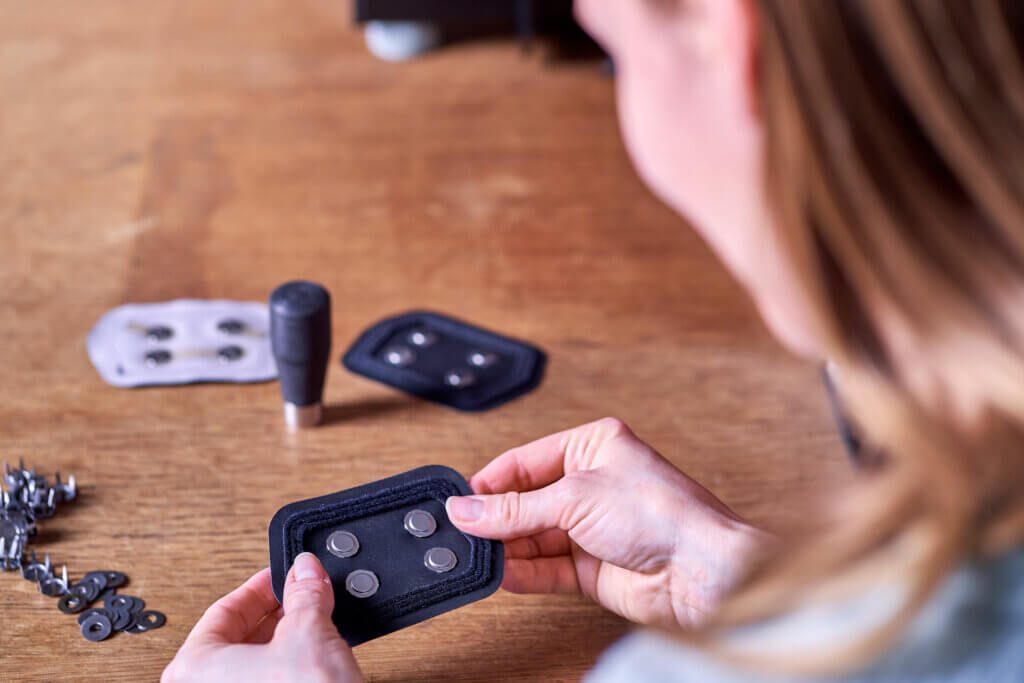
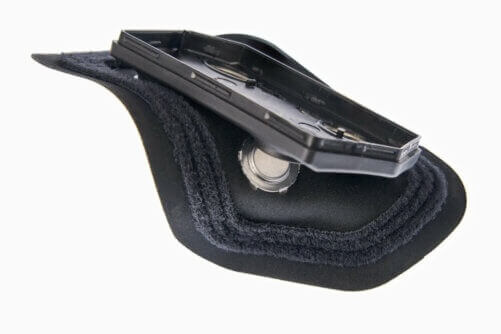
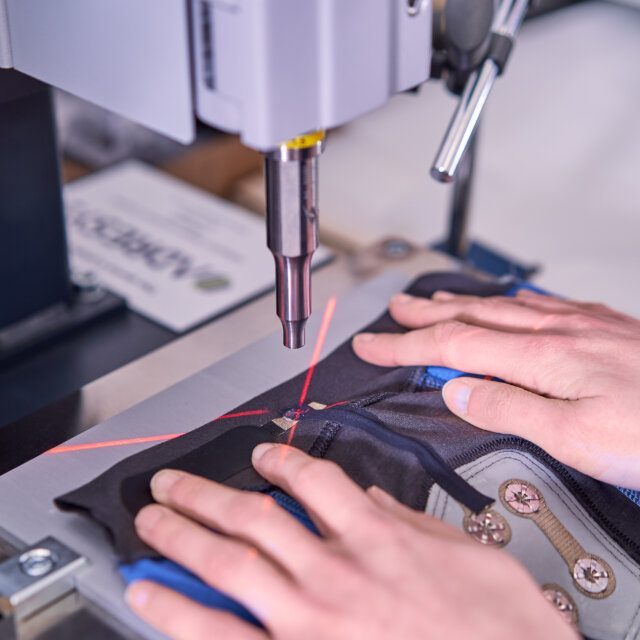
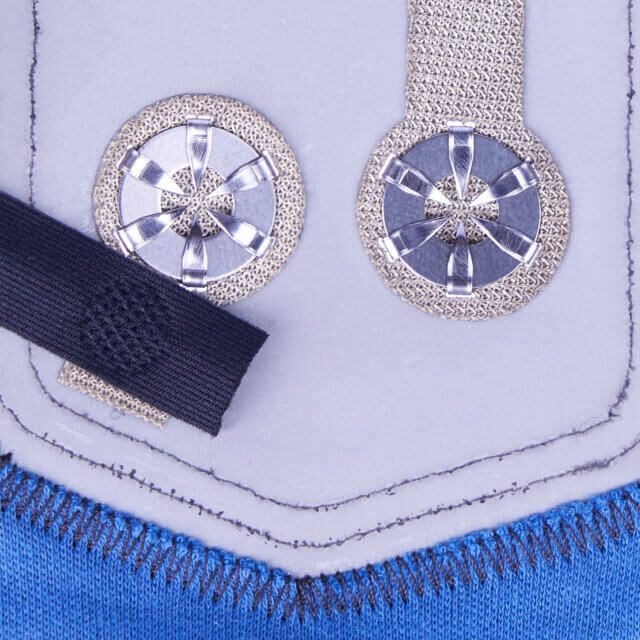
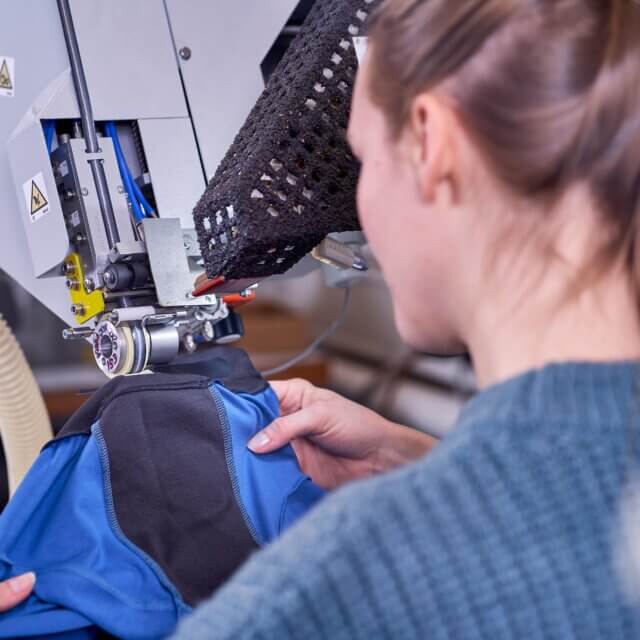
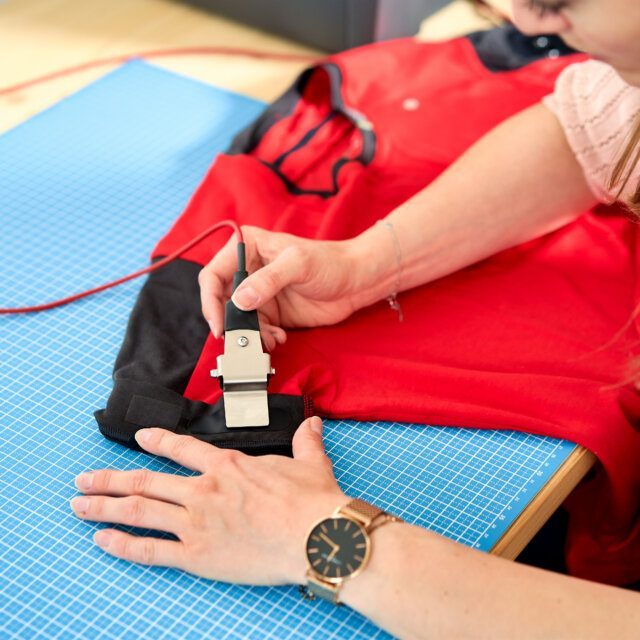
 ADRESYS
ADRESYS  ADRESYS
ADRESYS  ADRESYS
ADRESYS  ADRESYS
ADRESYS